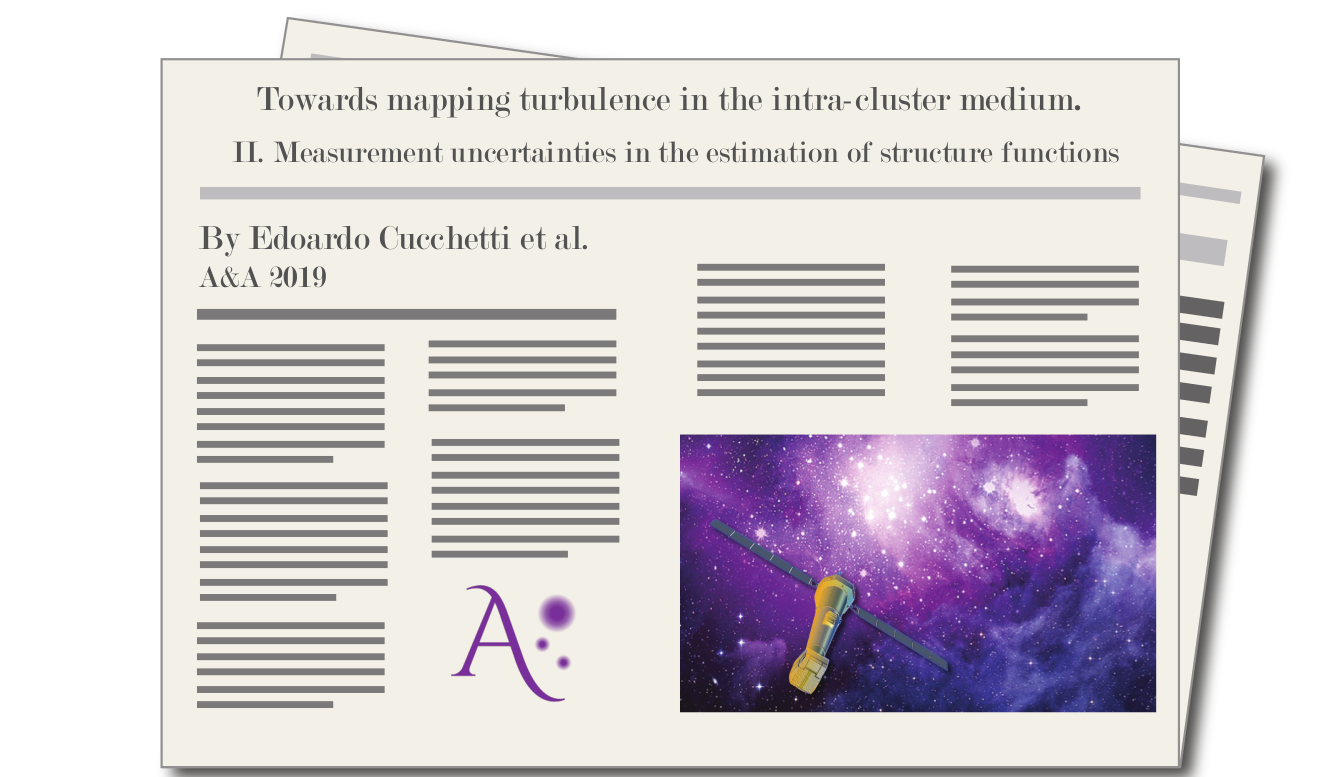
Towards mapping turbulence in the intra-cluster medium

By Edoardo Cucchetti
X-ray observations of the hot gas filling the intra-cluster medium provide a wealth of information on the dynamics of clusters of galaxies. The global equilibrium of the ICM is believed to be partially ensured by non-thermal pressure support, notably the dissipation of energy through turbulent motions. Accurate mapping of turbulence using X-ray emission lines is challenging due to the lack of spatially-resolved spectroscopy. Only future instruments such as the X-ray Integral Field Unit (X-IFU) on Athena will have the spatial and spectral resolution to quantitatively investigate the ICM turbulence at all scales. Powerful diagnostics for these studies are line shift and the line broadening maps, and the second-order structure function. When estimating these quantities, instruments will be limited by uncertainties of their measurements, and by the sample variance (aka cosmic variance) of the observation.
We extend here the formalism started in our companion paper I to include the effect of statistical uncertainties in the estimation of these line diagnostics, in particular for structure functions. We demonstrate that statistics contribute to the total variance through different terms, which depend on the geometry of the detector, the spatial binning and the nature of the turbulent field. These terms are important when probing the small scales of the turbulence. An application of these equations is performed for the X-IFU, using synthetic turbulent velocity maps of a Coma-like cluster of galaxies. Results are in excellent agreement with the formulas both for the structure function estimation (<3%) and its variance (<10%). The expressions derived here and in paper I are generic, and ensure an estimation of the total errors in any X-ray measurement of turbulent structure functions. They also open the way for optimisations in the upcoming instrumentation and in observational strategies.

